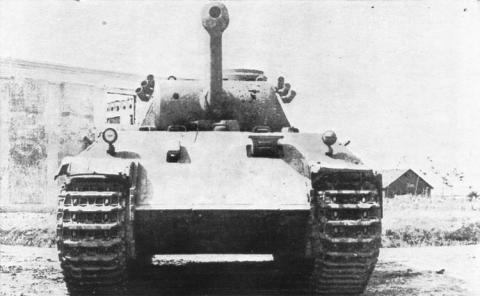Was the Panzer V "Panther" Worth It?

Though the Panzer V "Panther" is often lauded as one of the Second World War's top tanks there is a serious question as to whether the immense resources put into developing and fielding this tank was worth it. Though a new tank design when it first appeared in the Wehrmacht's ranks during the summer of 1943, the Panzer V owed much to the superb T-34 that had spurred the Panther's development. That said, the effort to produce a new medium tank to replace the Panzer III and IV had actually started in 1938. However, the developmental process had been hamstrung by a variety of problems. These included a lack of urgency, changing parameters which continually caused the proposed vehicle to increase in size and complexity; as well as the fact that the chief engineer in charge of the project lacked the talent and vision of men such as his Soviet counterpart - Mikhail Koshkin.
Thus, in spite of the long developmental history of the German army's next generation medium tank, it would prove hardly ready for operational use by the time it was first deployed during July 1943, and would fight against teething problems throughout its initial year in deployment. That said, the new Panzer V possessed several notable features that offered tremendous battlefield potential, and would make it a formidable main battle tank. For instance, it was armed with a long barreled high-velocity 75mm L/70 gun designed by Rheinmetall-Borsig which was capable of penetrating well over 100mm of armor at 1000 meters. The Panther, like the Tiger, also featured excellent optics, providing German tank gunners a huge advantage over their opponents.
Panther production had started in December1942, at MAN, Daimler-Benz, Maschinenfabrik Niedersachsen Hannover, and Henschel, but given the Panther represented an entirely new design many developmental problems plagued the project. In particular, the front wheel transmission and engine, designed for a lighter tank, labored under the enormous strain produced by the tank's heavy petrol engine and overall weight - which had climbed to 45 tons with a May 15, 1942 decision by Hitler to increase the vehicles frontal armor to 80mm in thickness - a requirement made after the engine and drive had been already selected based upon a lighter weight vehicle. Ironically, in spite of the insistence on thicker frontal armor than the Panzer IV, and thus huge increases in weight over the tank it was meant to replace, the vehicle still had been fitted with comparatively weak side armor offering hardly better protection than that offered by the newest mark Panzer IVs. With such minor differences in protection the Panther therefore featured a huge weak point in a design that had ostensibly traded off the Panzer IV's better reliability and mobility for greater battlefield survivability. The problems with the Panther were so great that in June the first 250 produced earlier in the year had to be rebuilt, and on June 16, 1943 Guderian declined to certify the tank as combat ready.
The Panther program was one of the most important in the German armaments industry. Although the Panzer VI Tiger tank was a harder hitting better protected tank then the T-34 and M-4 Sherman, it was too expensive and time consuming to build to ever make it onto the battlefield in anything other than modest numbers. Both the Panzer III and early marks of the Panzer IV could hardly stand up to the T-34, and thus the Panther was designed to not only be a superior weapons system to the T-34; but also built in a manner consistent with that of a main battle tank to be widely fielded by Germany's panzer arm. The Panther, in being technically superior to either the T-34 or M-4 Sherman in terms of its optics, main gun and armored protection; would define a late war German approach to combating quantity with a newfound qualitative superiority in categories in which previous German tanks had lagged their primary antagonists. That said, both the Red Army and Allied army's held onto not just the pursuit of quantitative superiority but qualitative as well - in the sense of mechanical reliability, fuel economy. and the corresponding streamlined logistics that supported such tanks. Thus, both sides enjoyed varying qualitative advantages over the other in the comparative tank designs fielded by the Second World War's major combatants; a fact all too often overlooked by those focused on the raw number of vehicles each army took delivery of during the war.



Comments
Qualatative
Even as the Panther (after many teething issues, not all of ever fixed) was slightly ahead in tech level espcially the gun, it fell behind in 2 major issues.
Power Train. The engine was over worked and the final drive barely up to the task.
Crew . The Mid and Late War crews had severly low standards of training.
Post new comment